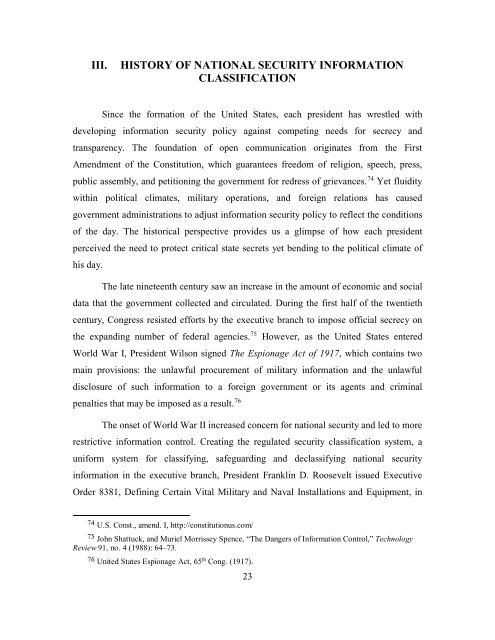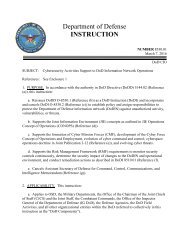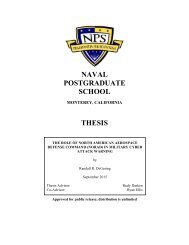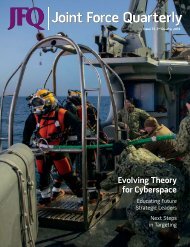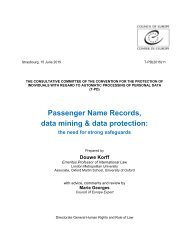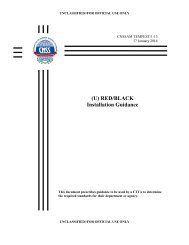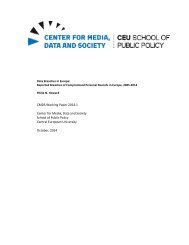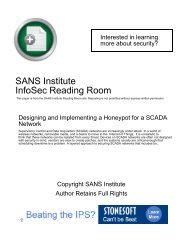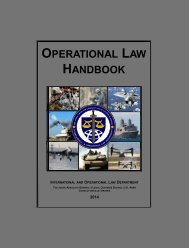SCHOOL THESIS
?view&did=768625
?view&did=768625
You also want an ePaper? Increase the reach of your titles
YUMPU automatically turns print PDFs into web optimized ePapers that Google loves.
III.<br />
HISTORY OF NATIONAL SECURITY INFORMATION<br />
CLASSIFICATION<br />
Since the formation of the United States, each president has wrestled with<br />
developing information security policy against competing needs for secrecy and<br />
transparency. The foundation of open communication originates from the First<br />
Amendment of the Constitution, which guarantees freedom of religion, speech, press,<br />
public assembly, and petitioning the government for redress of grievances. 74 Yet fluidity<br />
within political climates, military operations, and foreign relations has caused<br />
government administrations to adjust information security policy to reflect the conditions<br />
of the day. The historical perspective provides us a glimpse of how each president<br />
perceived the need to protect critical state secrets yet bending to the political climate of<br />
his day.<br />
The late nineteenth century saw an increase in the amount of economic and social<br />
data that the government collected and circulated. During the first half of the twentieth<br />
century, Congress resisted efforts by the executive branch to impose official secrecy on<br />
the expanding number of federal agencies. 75 However, as the United States entered<br />
World War I, President Wilson signed The Espionage Act of 1917, which contains two<br />
main provisions: the unlawful procurement of military information and the unlawful<br />
disclosure of such information to a foreign government or its agents and criminal<br />
penalties that may be imposed as a result. 76<br />
The onset of World War II increased concern for national security and led to more<br />
restrictive information control. Creating the regulated security classification system, a<br />
uniform system for classifying, safeguarding and declassifying national security<br />
information in the executive branch, President Franklin D. Roosevelt issued Executive<br />
Order 8381, Defining Certain Vital Military and Naval Installations and Equipment, in<br />
74 U.S. Const., amend. I, http://constitutionus.com/<br />
75 John Shattuck, and Muriel Morrissey Spence, “The Dangers of Information Control,” Technology<br />
Review 91, no. 4 (1988): 64–73.<br />
76 United States Espionage Act, 65 th Cong. (1917).<br />
23


